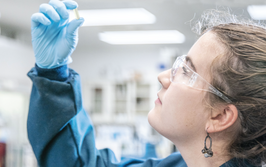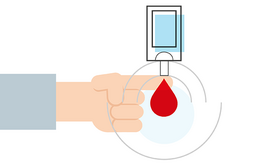
Sticking to Your Stent
New patient adherence tablet app incorporates storytelling and individual patient data to improve clinical outcomes
In the mid-1990s, scientists marveled at the effectiveness of the new drug eluting stents over traditional bare-metal stents. The clinical research showed that they were far superior for the treatment of coronary artery narrowings, resulting in lower rates of major adverse cardiac events. But shortly after the new stents were used in practice, scientists and doctors began to realize that the success in the clinic wasn’t being replicated in day-to-day practice. The main reason? Patient adherence.
For drug eluting stents to work, the patient must take their medication for 12 months. Stopping early increases the risk of morbidity and mortality. Even a delay in filling in a prescription from the hospital by 48 hours can increase the risk of death. Speaking with patients, researchers found that adherence suffered because people didn’t understand why they had to take the medication, nor the consequences for not taking it. With this in mind, Andrew Boyd, and his interdisciplinary team at University of Illinois in Chicago have developed an app called “My Interventional Drug-Eluting Stent Education App” (MyIDEA) to improve clinical outcomes.
The main findings from the study was a 10 percent improvement in medication possession ratio (how often the patient took their medication) compared to a control group. They also found a 20 percent improvement in patients who were considered adherent (taking their medication more than 80 percent of the time) (1). “The findings weren’t statistically significant, due to the small sample size, but we are planning to conduct much larger scale studies in the future,” says Boyd.
The key to the app was making it personalized to every patient. “We took data from the CathPCI Registry Database, which includes variables inputted by cardiologists about different procedures – e.g. what were their cardiology symptoms before treatment? What were they afterwards? Did they discharge home? Where there complications?” Boyd’s team took that structured information and used it to customize the app to each patient. In other words, it’s a personalized app that incorporates electronic health records.
The team – which included a cardiologist, a nurse practitioner, a nurse researcher, a pharmacist and five patients – also took the top 5 reasons people stopped taking their medication from peer reviewed literature and came up with corresponding patient narratives. “The idea was to behaviorally prepare patients for the common reasons people stop taking their medication,” says Boyd.
Boyd has had some conversations with pharmaceutical companies, but the main challenge is that due to the personalized nature of the app, it can’t simply be sold on the app store. “It has to be integrated into a hospital IT system. So the question is who takes the liability for protecting the data?” asks Boyd. “Who supports the IT infrastructure? And, ultimately, who pays? Is it the pharma company? The hospital? The stent company?”
The market for such a personalized app is in its infancy, but in the future will such apps be used to promote better patient compliance in a wide variety of areas? There are a variety of challenges to overcome first.
- V Shah et al., “Patient-centered tablet application for improving medication adherence after a drug-eluting stent”, Front Pub Health, 4, 272 (2016).

Over the course of my Biomedical Sciences degree it dawned on me that my goal of becoming a scientist didn’t quite mesh with my lack of affinity for lab work. Thinking on my decision to pursue biology rather than English at age 15 – despite an aptitude for the latter – I realized that science writing was a way to combine what I loved with what I was good at.
From there I set out to gather as much freelancing experience as I could, spending 2 years developing scientific content for International Innovation, before completing an MSc in Science Communication. After gaining invaluable experience in supporting the communications efforts of CERN and IN-PART, I joined Texere – where I am focused on producing consistently engaging, cutting-edge and innovative content for our specialist audiences around the world.


















